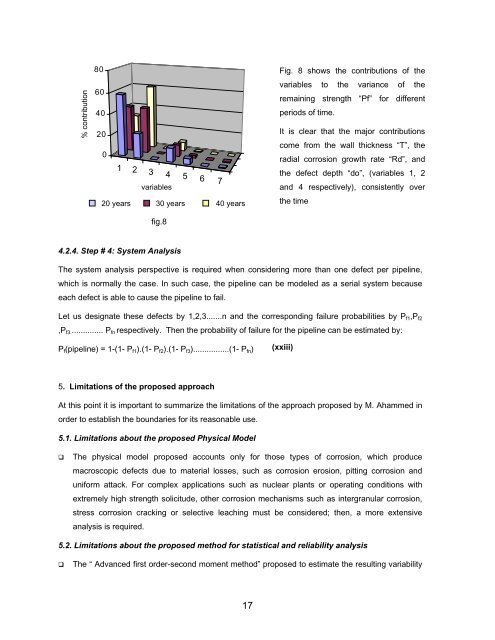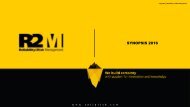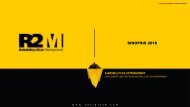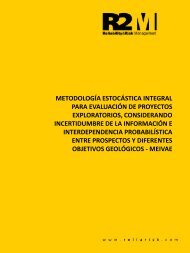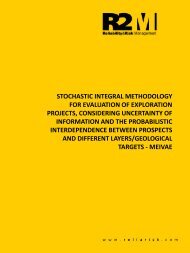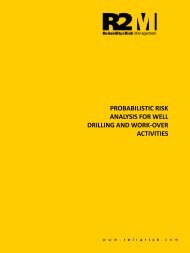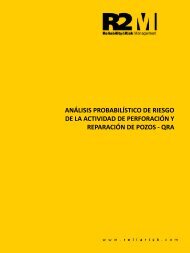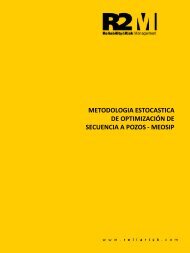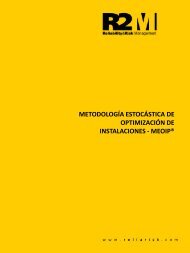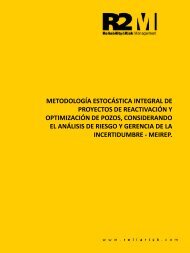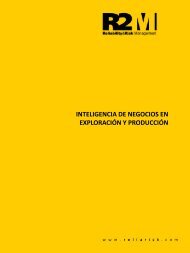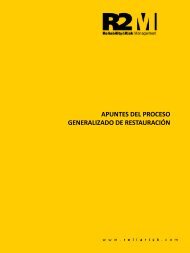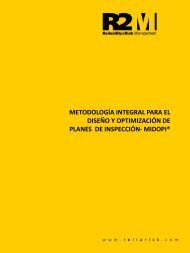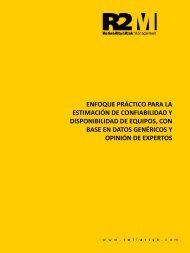Remaining Life of a Pipeline
Create successful ePaper yourself
Turn your PDF publications into a flip-book with our unique Google optimized e-Paper software.
% contribution<br />
80<br />
60<br />
40<br />
20<br />
0<br />
1 2 S1<br />
3 4 5 6 7<br />
variables<br />
20 years 30 years 40 years<br />
fig.8<br />
Fig. 8 shows the contributions <strong>of</strong> the<br />
variables to the variance <strong>of</strong> the<br />
remaining strength “Pf” for different<br />
periods <strong>of</strong> time.<br />
It is clear that the major contributions<br />
come from the wall thickness “T”, the<br />
radial corrosion growth rate “Rd”, and<br />
the defect depth “do”, (variables 1, 2<br />
and 4 respectively), consistently over<br />
the time<br />
4.2.4. Step # 4: System Analysis<br />
The system analysis perspective is required when considering more than one defect per pipeline,<br />
which is normally the case. In such case, the pipeline can be modeled as a serial system because<br />
each defect is able to cause the pipeline to fail.<br />
Let us designate these defects by 1,2,3.......n and the corresponding failure probabilities by P f1 ,P f2<br />
,P f3. .............. P fn respectively. Then the probability <strong>of</strong> failure for the pipeline can be estimated by:<br />
P f (pipeline) = 1-(1- P f1 ).(1- P f2 ).(1- P f3 )................(1- P fn )<br />
(xxiii)<br />
5. Limitations <strong>of</strong> the proposed approach<br />
At this point it is important to summarize the limitations <strong>of</strong> the approach proposed by M. Ahammed in<br />
order to establish the boundaries for its reasonable use.<br />
5.1. Limitations about the proposed Physical Model<br />
<br />
The physical model proposed accounts only for those types <strong>of</strong> corrosion, which produce<br />
macroscopic defects due to material losses, such as corrosion erosion, pitting corrosion and<br />
uniform attack. For complex applications such as nuclear plants or operating conditions with<br />
extremely high strength solicitude, other corrosion mechanisms such as intergranular corrosion,<br />
stress corrosion cracking or selective leaching must be considered; then, a more extensive<br />
analysis is required.<br />
5.2. Limitations about the proposed method for statistical and reliability analysis<br />
<br />
The “ Advanced first order-second moment method” proposed to estimate the resulting variability<br />
17


